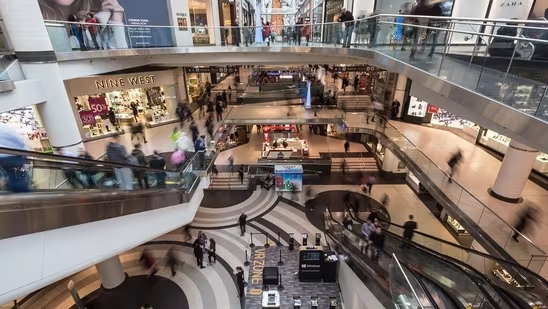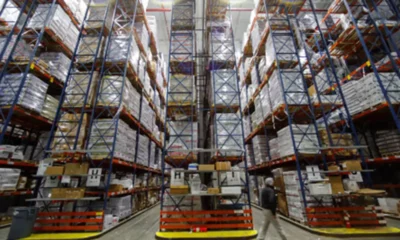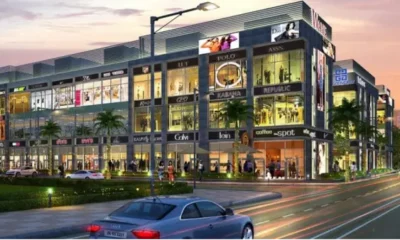Report
CBRE research report puts spotlight on new strategies post-COVID


CBRE South Asia Pvt. Ltd recently announced comprehensive findings of its research report titled ‘Indian Real Estate in 2021: Reboot | Reimagine | Regain’.
The report gives an insight into how the changed times have posed a need for the Indian RE sector to recalibrate its operations in order to ensure sustained recovery, also providing a view of the way ahead.


Abhinav Joshi, Head of Research- CBRE, India, Middle East & North Africa, said, “We are currently witnessing a dramatic acceleration in three trends across most sectors: tech enhancement of spaces, increased flexibility of leasing or portfolios and heightened e-commerce penetration. While the impact of remote working is yet to be gauged in India, the interplay between retail and logistics has taken on a new dynamic, which would support the rise of urban logistics. And while residential has chosen its path of recovery in the form of mid-end and budget housing, the focus on alternative segments (flexible workspaces, DCs and CS facilities) implies that their inclusion into mainstream RE is inevitable.”
What recovery would look like for different RE sectors in India:
Office
Advances in technology, a more mobile workforce and uncertain economic growth are reshaping the business environment and transforming the occupier approach to RE decision-making.
Post COVID-19, the implementation of technologies such as virtual reality and artificial intelligence is likely to have a long-term and far-reaching impact on the office sector in India.
Occupiers would continue to deploy a hybrid model of Work from Anywhere (WFA) which would result in having a more diversified workforce network and ensure business continuity planning (BCP).
I&L
A reconfigured supply chain ecosystem is expected to help businesses withstand, and even thrive on, disruption.
An increase in the quantum of I&L investment post COVID-19 is expected, with global players primarily inclined towards greenfield projects and select brownfield acquisitions.
Upcoming initiatives such as the Draft National E-commerce, Logistics and Industrial Policies, which once approved, are expected to further streamline the sector, thereby boosting logistics demand.
Retail
Retailers of the future are likely to curate immersive experiences for their customers so that they can test or try products in the context of their actual usage.
The e-commerce sector in India is expected to enable an innovative and sustainable shopping experience for customers.
Post COVID-19, stores are also anticipated to serve as platforms to engage consumers and amplify their brand.
Residential
While a gradual improvement in sales across all segments is expected, mid-income (INR 45 lakh to INR 1 crore) and budget (less then INR 45 lakh) categories are likely to be the key focus areas among homebuyers and perform relatively better in 2021.
The use of tech is likely to continue boosting sales, as more developers are turning towards sophisticated PropTech tools to enable decision-making.
Construction techniques are undergoing massive tech enhancement, which is likely to accelerate timelines, improve quality and build resilience for the sector.
Alternate Segments
Flexible Workplaces: Flexible workspaces would continue to be an integral part of real estate strategies going forward, especially considering that occupiers have been looking to optimize their portfolios – which would involve integrating traditional, remote working and flexible office spaces.
DCs: Owing to the rise in usage of smart devices and increased data consumption, occupier demand for data storage is likely to increase in the coming quarters with the country’s DC capacity expected to cross 600 MW during 2020-21.
CS units: Increasing urbanization, demand from the healthcare / pharma industry and the emergence of organised retail food processing and servicing sectors have accelerated the requirement for an efficient CS infrastructure in India, thereby driving demand for the CS segment. CBRE expects the overall CS real estate stock to rise to 1,400-1,500 million sq. ft. by 2023.
-



 Interviews4 weeks ago
Interviews4 weeks agoHigh Rental Yield, Price Appreciation, Stable Growth, Make Sydney an Ideal Realty Investment Option: Haansal Estate
-



 News3 weeks ago
News3 weeks agoManasum Senior Living Launches IKIGAI GOA, A Senior Living Community in North Goa, in collaboration with Prescon Homes
-



 News2 weeks ago
News2 weeks agoKW Delhi 6 Mall Onboards New Brands
-



 News2 weeks ago
News2 weeks agoGodrej Properties Sells Rs 3k cr+ Homes of Godrej Zenith, Gurugram, within 3 days
-



 News3 weeks ago
News3 weeks agoBridging India Divide: Top 5 Tier- 2 Cities to Focus On
-



 News2 weeks ago
News2 weeks agoCommercial Realty Gets Tech Savvy: Fast Construction, Enhanced Convenience
-



 News3 weeks ago
News3 weeks agoMultipoint Connection – A Definite Boon
-





 News2 weeks ago
News2 weeks agoRBI’s Status Quo on Key Policy Rates to Help Maintain the Real Estate Growth Momentum, Say Industry Stalwarts
























